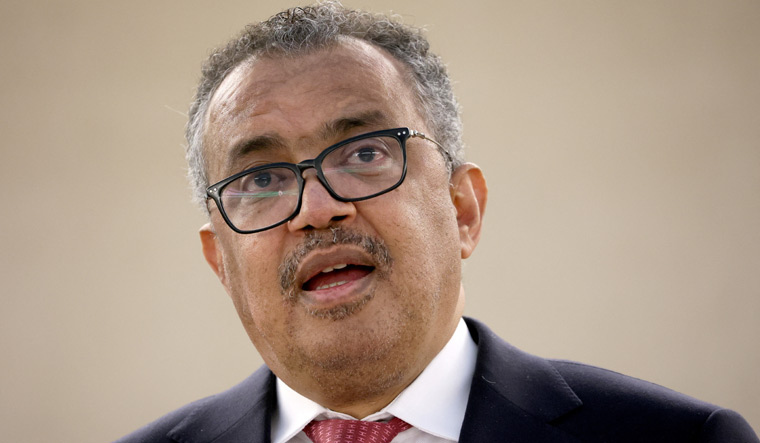Dr Tedros Adhanom Ghebreyesus, director-general of WHO, urged the countries to integrate traditional and complementary medicine into their national health systems. He also asked the member countries to identify specific, evidence-based suggestions which can go into formulating a global strategy for traditional medicine. Dr Ghebreyesus was speaking during the inauguration of the first traditional medicine global summit in Gandhinagar, held along with the G20 health ministers conference in Gandhinagar.
At the end of the two-day conference, in which experts from 75 countries are participating, there will be a 'Gujarat Declaration' aimed at enhancing “the appropriate integration of traditional medicine into national health systems.”
This summit is an important opportunity to advance the understanding and use of traditional medicine. Dr Ghebreyesus, who Prime Minister Narendra Modi fondly calls ‘Tulsi Bhai’, opened the inaugural session with the keynote address.
The summit, at the WHO Global Centre for Traditional Medicine, set up in Gujarat last year, assumes importance as it will give directions at the global level on ways “to build the evidence and data to inform policies, standards and regulations for the safe, cost-effective, and equitable use of traditional medicine,” Dr Ghebreyesus said.
As WHO director-general batted for increased use of traditional medicine, he gave examples of how it has been used across the world. “Growing up in Ethiopia, a country with its own rich history of traditional medicine, I saw first-hand how communities relied on traditional practitioners for their health needs. Traditional medicine has a long history. Over 3,500 years ago, Sumerians and Egyptians used bark from the willow tree as a pain reliever and an anti-inflammatory.”
In 1897, chemist Felix Hoffmann synthesised aspirin and the drug has gone on to improve, and save the lives of millions of people every day. Likewise, the Madagascar periwinkle, which is now the source of childhood cancer drugs, is mentioned in Mesopotamian folklore, as well as Ayurveda and traditional Chinese medicine, he said.
Medicinal plants like hawthorn and foxglove have been used to treat cardiovascular disease and hypertension, and a derivative of the wild Mexican yam is one of the first active ingredients in contraceptive pills. India has a rich history of traditional medicine through Ayurveda, including yoga, which has been shown to be effective in alleviating pain, WHO DG said.
“As someone who spent many years researching malaria transmission, I am inspired by Chinese scientist Tu Youyou, who leveraged traditional knowledge to achieve a breakthrough in malaria treatment. After testing unsuccessfully over 240,000 compounds for use in antimalarials, Tu Youyou turned to traditional Chinese medical literature for clues. There, she and her team found a reference to sweet wormwood to treat fevers. In 1971, Tu Youyou’s team isolated artemisinin, an active compound in sweet wormwood that was particularly effective in treating malaria. Artemisinin is now the backbone of malaria treatment,” Dr Ghebreyesus said.
Ayush Minister Sarbananda Sonowal said the outcome of the summit will help to propose recommendations for a dedicated forum within future G20 presidencies. He reminded the gathering that the integrative approach of the government of India is resulting in the establishment of dedicated Ayush Departments in all AIIMS.
Sonowal said more than 170 countries practice traditional medicine. “To propagate the use of traditional medicine, we need evidence, and the global centre will work towards this. This is the first centre in the world, in Jamnagar. It is the tallest success story charted by PM Modi. India will provide solutions in all fields.”
Health Minister Mansukh Mandaviya said India is well-positioned to become a knowledge hub and unlock the full potential of traditional medicine. “The pharmaceutical and cosmetic industries are both showing significant interest in traditional medicine and more than 170 countries around the world are utilising it. The summit provides an ideal platform for international collaboration and the exchange of ideas to promote best practices in the sector.”
An innovative and experiential exhibition on traditional medicine was set up at the venue of the summit. The mythical wish-fulfilling tree, the Kalpavriksha, was the high point of the Ayush exhibition zone. In addition, an immersive experience, featuring an AI-based Ayurveda Pulse diagnosis, and body constitution analysis were being done at the venue.



